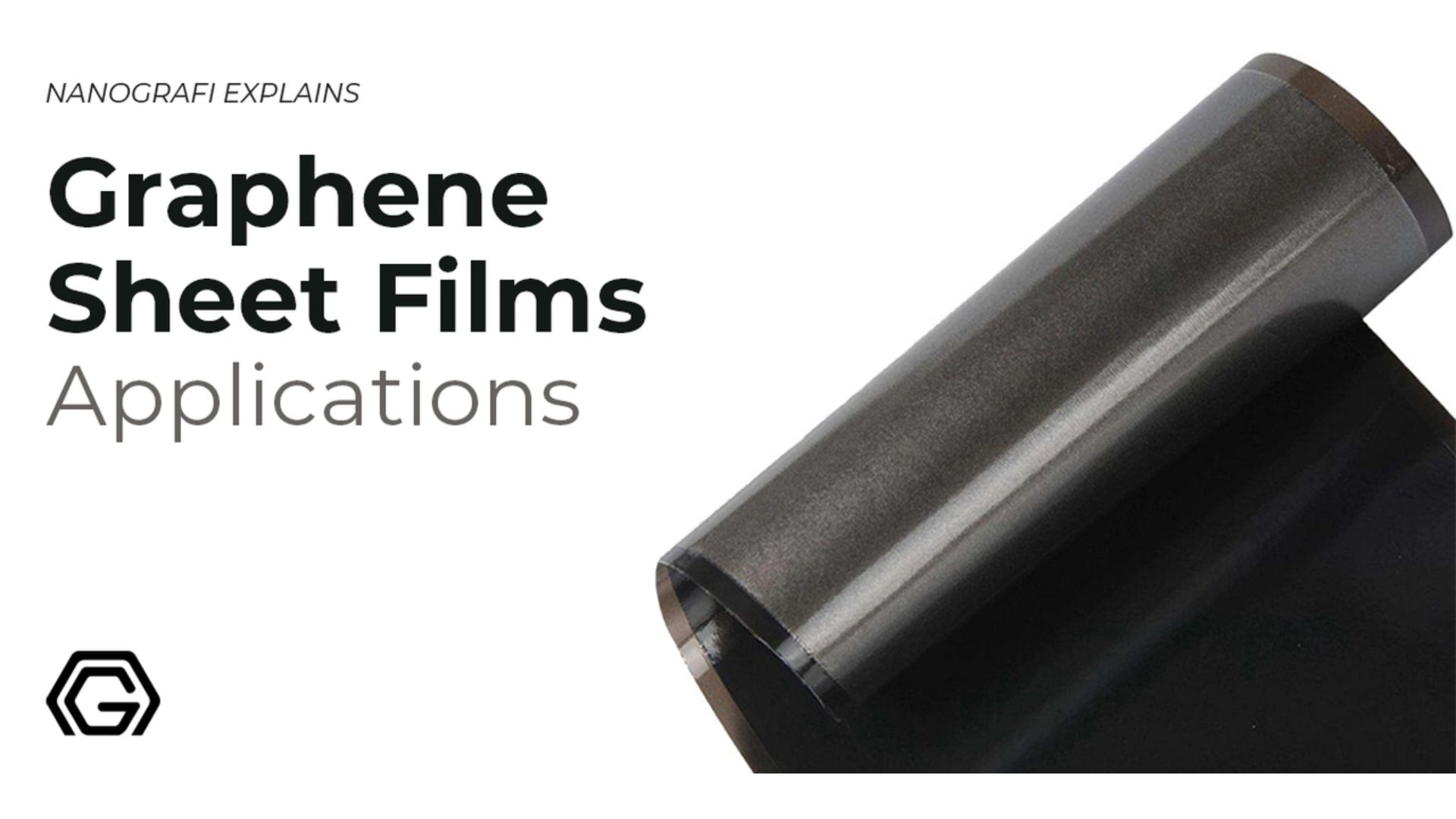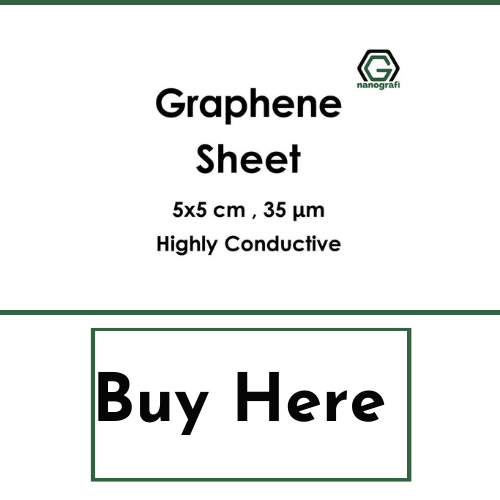How Tough Graphene Is: Improving The Toughness of Graphene Films
Graphene is very commonly known to be a carbon allotrope, and it is a part of the very well-known aromatic molecules in chemical sciences.
It is also known to be a basic structural element of all the other known allotropes. It is very important as it is the building block for all materials of graphite too.
Introduction
Graphene films are present with very high toughness which is its greatest physical property, strength, electrical conductivity following. It has many extremely encouraging applications such as the structural materials which are very light in weight for a vast diversity of uses; this includes aircraft and automobile bodies, windmill blades, equipment required in sports as ductile conductive materials for the wearable electronics which are popular and as an electromagnetic (EM) interference shielding material to attain the purpose of eradication of EM pollution of diverse electronic devices. The development of covalent bonding P-O-C among BP and graphene oxide (GO) nanosheets does not only reduce the voids of GO film but along with that also enhances the adjustment of the extent of GO nanosheets, which cause the high and a great deal of compactness of GO film.
An Overview of Graphene
Graphene is one of the best-known allotropes of carbon present in the form of a two dimensioned lattice of a hexagon and with only a single layer of atoms, but one atom from each vertex is present. It belongs to the category of aromatic molecules, and that is why graphene ought to be perpetually a big aromatic molecule. The basic structure of graphene is the same as of those other allotropes, which include carbon nanotubes, charcoal, graphite, and fullerenes. Also, graphene is considered as a basic structural element of all the other allotropes. Graphene is known to be one of the strongest materials. It is harder than diamond, but on the other hand more elastic than rubber, and it is tougher than steel, but on the other hand lighter than the aluminium. The building block for all the other materials of graphite is known to be graphene. All these materials are two dimensional where height which is the third dimension is always considered as zero, whereas length and width are the other two dimensions as they extend into two dimensions, but it presents the materials which are one atom thick only yet possess two dimensions, and graphene is one such material which is extremely beneficial.
Properties of Graphene
Graphene possesses a very distinctive set of properties which makes it unique in its self.
Thickness: If we look at the thickness of graphene, then we will know that its thickness is a hundred times more and strong than the strongest steel present. It is one of the greatest properties of graphene.
Density: Through the thickness of graphene is much stronger, but the density of graphene is very much low in comparison to any steel as compared to the thickness. It has a surface mass equal to 0.763mg per square meter. It is the second greatest property of graphene.
Conduction: Due to its nature being transparent, it is extremely efficient in the conduction of heat and electricity. It is the third greatest property of graphene.
Diamagnetism: Other than the above-mentioned properties, graphene also shows a huge and nonlinear diamagnetism which is even better and greater than the graphite itself. Researchers have also shown that graphene has a bipolar transistor effect, ballistic transport of charges, and the large quantum oscillations. It is the fourth greatest property of graphene.
Graphene to Improve The Toughness of Graphene Films
Graphene films are present with very high toughness which is its greatest physical property, strength, and electrical conductivity following. It has many extremely encouraging applications such as the structural materials which are very light in weight for a vast diversity of uses; this includes aircraft and automobile bodies, windmill blades, and equipment required in sports as ductile conductive materials for the wearable electronics which are popular and as an electromagnetic (EM) interference shielding material to attain the purpose of eradication of EM pollution of diverse electronic devices.
To get more information about the applications of graphene sheet films,
you can read our blog post here.
In an old Nano werk Spotlight ('Stitching' together ultra strong graphene films) a report was presented on the topic of a scheme to 'stitch' decreased graphene oxide (rGO) nanosheets into very powerful, extremely efficient, and high conductivity graphene films with the help of utilizing only minute cross-linked amounts of graphene.
Pacing the work that was done previously, a team that was led by a professor at Beihang University in Beijing for research work has currently taken the initiative and has developed black phosphorus (BP) graphene films which are very much functional, as a result of which they form record toughness.
"The development of covalent bonding P-O-C among BP and graphene oxide (GO) nanosheets does not only reduce the voids of GO film but along with that also improves the adjustment degree of GO nanosheets, which cause the high and a great deal of compactness of the GO film. The reduced graphene oxide (rG0) nanosheets were arranged in the form of a degree and then again improvised into the blank spaces which are available in the lamellar graphene film because of their reduction too and ahead of the reduction in chemicals and π-π stacking interactions come to existence by the conjugated AD molecules. The toughness of the graphene film formed then reaches to the point that is as high as ∼51.8 MJ m-3 – which is also the highest value recorded to date."
The team of the researchers also points out that the ultra-tough black phosphorus which is formed as a result is used to functionalize graphene films with an elevated power and exceptional conductivity which then exhibits huge stability actions and electromagnetic shielding performances for the better working of it.
A normal working can be used to inspire the conversion of the graphite powders which are low in price into the graphene-based films which are excellent in performance to fulfil the purpose of vast commercial uses in the future. Some of the other applications also include flexible energy storage and portable electronics.
Researchers have also been aware of the fact and made people around them which are more or less the whole world aware that graphene films always contain voids, which over the period drastically causes the deficiency in load transfer efficiency, and results cause the properties which are low in terms of mechanics filed.
For finding a solution of this problem and talk about it, the fictionalization of the GO nanosheets by BP nanosheets through P O C covalent bonding got accomplished in decreasing the voids in sheets of lamellar graphene film as a result of which it makes the graphene film much more compact, whereas along with that it is beneficially used for the improvement of the alignment degree of GO nanosheets.
This strategy then opens an avenue for the gathering of graphene nanosheets and then being changed to ultra-tough, strong, and conductive graphene, which is a graphene-based film. Along with that, the natural strengthening and toughening mechanisms are also used to provide an avenue for the gathering of graphene nanosheets and the other tiny nanosheets into high and great toughness graphene-based films using the obvious covalent bonding as to decrease voids and improve alignment degree.
A study showed that the black phosphorus could be really easy and essentially oxidized in the air, yet the stability of black phosphorus is easily and essentially improved via the coating of black phosphorus with polymers. Another experiment showed that the long-chain conjugated molecules are capable of easily forming π-π stacking with the graphene powder, which results in high toughness of the graphene films.
Out of these two experiments, one resulted in the hybrid GO-BP nanosheets, which are the foundation of this work. Atomic force microscopy (AFM) gave an insight that there were quite a lot of single layers of BP nanoplatelets on the surface of the GO nanosheet. The BP and GO single-layered nanosheets in mixing solution reacted completely under false temperature, which was checked through the zeta potential. The researchers gathered the GO-BP film by vacuum-assisted filtration and later on chemically reduced it by hydroiodic acid into the rGO-BP film.
The performance of the graphene black phosphorus films that were demonstrated in the various experiments are still lower than that of single-layered graphene nanosheets, so it is the current need to develop new strategies as to further enhance the toughness, tensile strength, and electrical conductivity of large scale graphene films for many practical applications. Along with that even though the graphene films show a very high range of toughness under room temperature, many practical applications shall also take place in extreme environments, examples can be of outer space with intense radiation and quite frequent variations of high and low temperatures. This variation is very important in terms of the performing abilities of the graphene-based films because, in more or fewer ways, it is essential for the speeding mechanism of the product. Along with that, it also increases the credibility of the product and then becomes good in terms of the usage.
Conclusion
Graphene is a carbon allotrope and is a part of aromatic molecules, well known in chemical studies. It belongs to the category of aromatic molecules, and that is why graphene ought to be perpetually a big aromatic molecule. The basic structure of graphene is the same as of those other allotropes, which include carbon nanotubes, charcoal, graphite, and fullerenes. Graphene possesses a very distinctive set of properties which makes it unique in itself, which includes thickness, density, diamagnetism, and conduction. The ultra-tough black phosphorus which is formed as a result of the development of covalent bonding P-O-C among BP and graphene oxide (GO) nanosheets are used to functionalize graphene films with an elevated tensile strength and exceptional conductivity which then exhibits giant ambient stability and electromagnetic shielding performance.
To get more information, you can visit Blografi.
References
Graphene Sheet Films Applications - Nanografi Nano Technology. (n.d.). Retrieved May 10, 2024, from https://nanografi.com/blog/graphene-sheet-films-applications/
Improving the toughness of graphene films. (n.d.). Retrieved May 10, 2024, from https://www.nanowerk.com/spotlight/spotid=54907.php
What is Graphene: The Ultimate Guide - Nanografi Nano Technology. (n.d.). Retrieved May 10, 2024, from https://nanografi.com/blog/what-is-graphene-the-ultimate-guide/
Zhao, S., Li, M., Wu, X., Yu, S. H., Zhang, W., Luo, J., Wang, J., Geng, Y., Gou, Q., & Sun, K. (2020). Graphene-based free-standing bendable films: designs, fabrications, and applications. Materials Today Advances, 6. https://doi.org/10.1016/j.mtadv.2020.100060
Zhou, T., Ni, H., Wang, Y., Wu, C., Zhang, H., Zhang, J., Tomsia, A. P., Jiang, L., & Cheng, Q. (2020). Ultratough graphene–black phosphorus films. Proceedings of the National Academy of Sciences of the United States of America, 117(16), 8727–8735. https://doi.org/10.1073/PNAS.1916610117/SUPPL_FILE/PNAS.1916610117.SAPP.PDF
Recent Posts
-
Advanced Materials for Unmanned Aerial Vehicle (UAV) Protection Against Laser
Consider a UAV on a critical mission, rendered inoperative by a sudden laser attack. With the increa …26th Jul 2024 -
Simulation and Modeling of Material Properties
Our world is composed of a dazzling array of materials, each with its own unique properties that dic …19th Jul 2024 -
Advanced Coatings for Superior Corrosion and Wear Resistance
Corrosion and wear pose significant challenges across various industries, leading to substantial eco …12th Jul 2024







